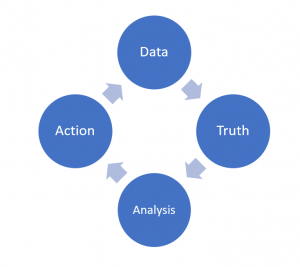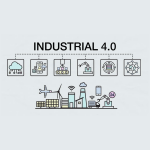From the Shop Floor to the ER
Two weeks ago I had the privilege of speaking on a panel at a hospital’s continuing education session for physicians. While normally the event tackles clinical subjects, this one was a bit of a departure.
I was invited to speak about artificial intelligence and how it can augment, not replace, one’s ability to perform workplace tasks. At first, it may seem like manufacturing and healthcare are strange bedfellows. However, there are a lot more similarities than you’d think at first glance.
Let’s take the lean manufacturing principles. According to the Lean Enterprise Institute, “The core idea is to maximize customer value while minimizing waste. Simply, lean means creating more value for customers with fewer resources.” It starts by identifying what is value-added versus non-value-added for the customer, and it guides Raven’s work to transform manufacturing. Born out of the Toyota manufacturing plant in the 1990s (formalized in 2001), it’s used effectively all over the world’s shop floors.
Those same lean concepts can also apply to the delivery of healthcare. If you replace the word “customer” with “patient,” the principles relate just as easily to healthcare as they do to manufacturing. While there are significant differences between the two, there are also some interesting similarities. Whether making a product or caring for patients, stakeholders must navigate a complex network of resources and processes, often under time restraints, to complete tasks.
I’m not so naïve to think the two industries are the same and the transition to lean principles is seamless. For example, it’s much easier to integrate lean into manufacturing – not only did it start in that industry, it’s also more hierarchical in its decision-making. In healthcare, however, decisions are often made through consensus. It can take longer to get institutional buy-in in a hospital as compared to a shop floor. Change takes time.
Beyond some of the organizational challenges, the two industries aren’t so different. Lean principles mimic the same scientific method to diagnose and treat organizational problems as doctors use to diagnose and treat medical conditions. Like lean, there’s an emphasis on value (or patient experience), quality (or safety), and continuing improvement (or education).
More and more, hospitals are exploring ways to mirror the success of lean in the manufacturing industry in their own emergency rooms. It makes sense – there’s a typical workflow of a patient who is admitted to the hospital involving the emergency rooms, triage, nurses, doctors, consultations, and sometimes other facilities. There can be long periods of waiting, misdiagnosis, or early/late discharge. Information often needs to be repeated and initial assessments need to be reassessed. It’s a perfect environment to apply lean principles to improve efficiency and quality.

Data analytics through artificial intelligence can help, but it’s simply a tool. What I proposed that day at the hospital is that, in order to get value from measurement, it must be a continuous flow from data collection, to the truth gleaned from that data, then analysis, and finally, action to improve. Once an action is taken, it’s back to data collection.
With an aging population, all hospitals strain to delivery care in an efficient and cost-effective way. By applying lean principles, healthcare facilities have the power to make a real difference to both their internal resources and the quality of care to their patients.




